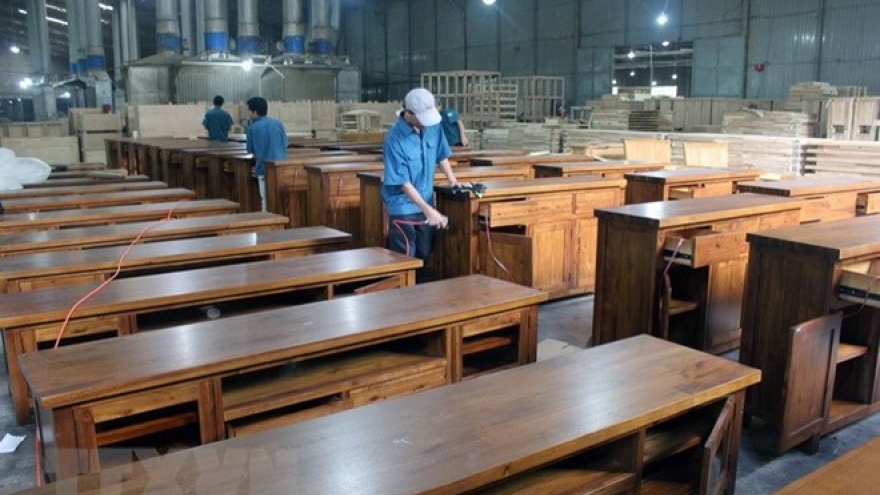Big global demand brings opportunities for Vietnam’s wood industry
Wood processing and export businesses of Vietnam hold many opportunities to expand market and increase export value in the time ahead, experts said at a workshop in Ho Chi Minh City on March 7.
 |
Huynh Van Hanh, Vice Chairman of the Handicraft and Wood Industry Association of HCM City, said there is huge room for the wood processing and export sector of Vietnam to develop in the years to come.
Aside from the strong growth of the domestic property market, the global demand for furniture wood and the trade of wood items this year are predicted to rise by 3.5% and 4%, respectively.
Helmut Merkel, Editor-in-chief of German magazine MOBELMARKT, said the wood consumption demand is increasing, focusing on products with design and colour close to nature. The demand for wood kitchen utensils is also big, accounting for 28% of total wood demand in Germany.
However, he said, not many Germans have gained information about furniture products of Vietnam. Vietnamese firms only have connection with distributors, and are yet to reach final customers in this market.
Juliane Lemcke, a wood industry expert of the Swiss Import Promotion Programme, said Vietnam’s wood sector has a number of chances to expand its market as there are good signs from such major importers as the US and the EU. The US market has high demand for paper, wood furniture and engineered wood. In the EU, the demand for wood and wood products is also on a stable upward trend thanks to economic recovery.
She added due to environmental protection pressure and limited material supply, the EU market tends to use more products made from engineered wood, a material which is relatively new in Vietnam but has already been popular in many other countries as it has low costs and wide applicability and reduces the dependence on natural wood materials.
Sharing the same view, Bjorn Henseler, an expert of Schuler group, said Vietnam is strong at processing solid wood, but many other countries, especially developed ones, now prefer industrial and engineered wood. Even in Vietnam, the demand for furniture made from industrial wood is also dominating due to the boom of high-rises.
He said aside from tapping their strength, Vietnamese businesses should swiftly catch up with market trends to make appropriate development strategies.
Juliane Lemcke said Vietnamese companies need to pay more attention to product features and trading methods of import markets. They should also enhance applying technology in transactions and advertising to access more customers.
At the workshop, participants said to boost wood and wood product exports to US$10 billion in 2020, Vietnamese businesses also need to update technology, improve manpower quality and management capacity, build their own brands, promote product quality, and boost support services to capitalise on opportunities.

